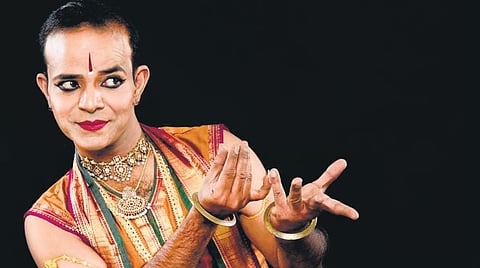
- LIFESTYLE
- FASHION
- FOOD
- ENTERTAINMENT
- EVENTS
- CULTURE
- VIDEOS
- WEB STORIES
- GALLERIES
- GADGETS
- CAR & BIKE
- SOCIETY
- TRAVEL
- NORTH EAST
- INDULGE CONNECT

Dance transcends gender,” says curator and organiser of Shivaarghya Rama Vaidyanathan, a festival dedicated to male classical dancers in celebration of Mahashivratri. Delhi’s eminent Bharatanatyam dance institute, Ganesa Natyalaya, has assembled 25 male dancers from across the country to showcase different dance forms on March 17.
Vaidyanathan, also the president of the institute, explains: “Shivaarghya pays tribute to the first dancer, Lord Nataraja, who symbolises the genderless dancing body. This year we have invited artists from Kerala, Chandigarh, Varanasi, Lucknow, Kolkata and Bengaluru.”
The festival is the brainchild of the late Guru Saroj Vaidyanathan, a Padma Bhushan awardee, who began the initiative in 2019 to showcase the versatility of Indian classical dance-forms and to also give opportunities to male artistes. “It’s a festival to encourage young male dancers because it’s very difficult for them to get as many opportunities as female dancers get in the field of classical dance,” she adds.
Shivaarghya comes under the ‘SwarnSaroja’ event, a year-long celebration to mark the golden jubilee of Ganesa Natyalaya, which was started by Guru Saroja Vaidyanathan in 1974.
“We lost her last September. We are calling the Golden Jubilee celebrations SwarnSaroja. Swarna means golden and Saroja is her name. So, under this series, we are going to have performances at Ganesh Natyalaya every month, not only showcasing our own dancers but also inviting a lot of artistes from outside,” Vaidyanathan explains.
The festival will begin with a lecture by scholar Dr VR Devika from Chennai; she will talk about ‘Nataraja and the Cosmos’. This is an event, Chandigarh-based Bharatanatyam dancer Varun Khanna looks forward to attending.
“Whenever one thinks of Indian classical dance, Nataraja comes to mind first. We worship the lord of dance, who is a male. Then why is there a stigma, in the Indian classical scene, on men dancing?” Khanna asks.
Classical dance-forms, for most parts, have been misconceived as feminine styles, barbed with stereotypes that compare grace with femininity. This kind of stigma often leads to such artistes being subjected to bullying, name-calling and even body shaming.
Khanna points out that most male dancers are called sissy or effeminate for choosing these art forms. “They are body shamed if somebody is a bit obese or hairy. The thing is, the male anatomy is such that one can’t help it. One has to face such comments. Most of us have faced this and it does affect us in a lot of ways – it’s psychologically and emotionally draining. However, over time we get resistant to it,” he says.
Kolkata-based Bharatanatyam dancer Nilava Sen explains that his top academic record made people believe that he was meant to pursue his higher studies. “I was mocked for choosing dance as a career option as a male artiste. I remember how my teachers were angry with me, they were sure I was ruining my career. However, I feel things are changing slowly. More male dancers have been coming to the forefront, and a festival like Shivaarghya only encourages that,” he says.
Once the social stigma that afflicts these artistes is got rid of, the viewers, they believe, will be able to see beyond gender because they will then be able to watch the performances by male artistes without preconceived notions. “They should empathise with the hard work that we all have put in, and also the struggles that we all have gone through in our own lives,” Khanna says.
Vaidyanathan believes that one must look at a dance form through the body, which acts as a medium of expression. It is genderless and one will get to see that through disciplines such as Kathak, Odissi, Kuchipudi, Kathakali, Bharatanatyam and Chau, she says.